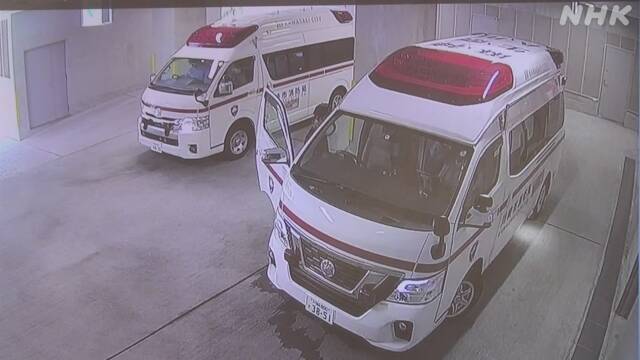As the spread of the new coronavirus continues, hospitals that accept emergency patients tend to stay longer in hospitals for infected elderly people, which is a factor in the tightness of beds. increase.
At a hospital in Kawasaki City, Kanagawa Prefecture, where the bed occupancy rate reached 98% this month, the 32 corona beds that can be operated for a month since the middle of last month have been full.
Nearly 90% of the patients hospitalized in the beds of the new corona are elderly, but compared to the 6th wave, it is said that there are many elderly patients who need a high degree of care, and nurses wore protective clothing on this day as well. I was helping with meals.
The Ministry of Health, Labor and Welfare has notified local governments nationwide that patients who do not require oxygen administration after the fourth day of hospitalization should switch to home care or transfer to a hospital for rehabilitation or long-term care. I'm here.
However, even if the symptoms have calmed down, there are few hospitals that will accept them, and their physical strength declines during the hospitalization period, requiring rehabilitation. There is a continuing shortage of hospital beds.
Toshitaka Ito, director of the emergency center at Shin-Yurigaoka General Hospital, said, "It's more nursing care than medical care. Even hospitals that provide rehabilitation do not readily accept patients infected with the coronavirus. Due to the limited number of beds, it is not possible to change hospitals. And we have to limit the acceptance of new patients," he said with a sense of crisis.
Corona bed occupancy rate sharply worsens in one month
The Ministry of Health, Labor and Welfare summarizes and publishes the occupancy rate of hospital beds for new corona patients in each prefecture every week.
According to this, the prefectures where the hospital bed occupancy rate exceeds 50%, which is the second most serious level of "the level at which measures should be strengthened" among the five stages classified by the government's subcommittee
, ▽ 2 prefectures as
of
July 13th ▽
3 prefectures as of July 20th ▽
16 prefectures as of July 27th ▽
27 prefectures as of August 3rd
▽ As of August 10, there are 38 prefectures, and in
about a month, the shortage of hospital beds in various places is rapidly becoming serious.
Twenty prefectures exceeded 50% in early February, when the ``6th wave'' infection peaked.
In the "7th wave", some elderly people died at home because they could not find a transport destination after being infected with the new corona, and the Ministry of Health, Labor and Welfare is asking local governments nationwide to strengthen their medical care systems.

